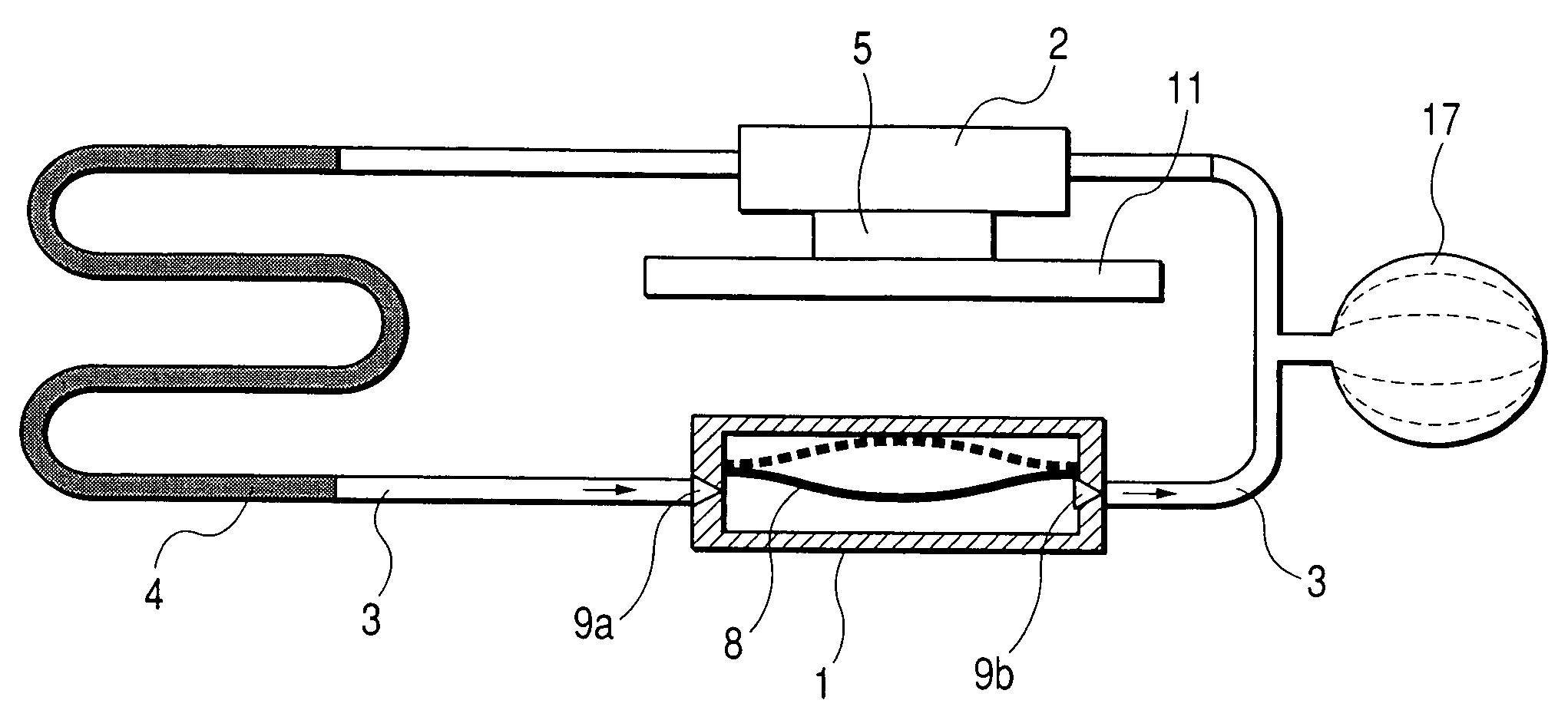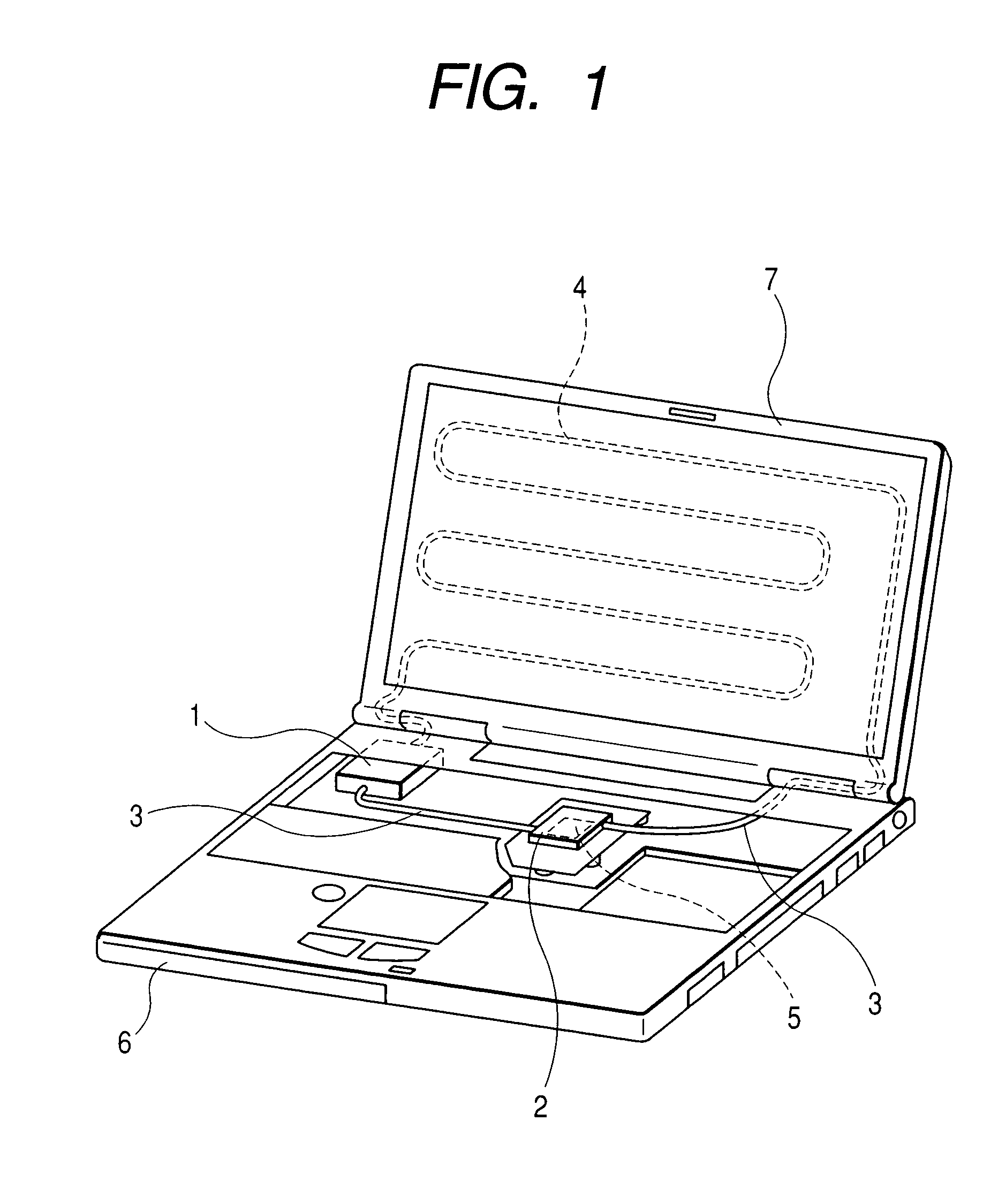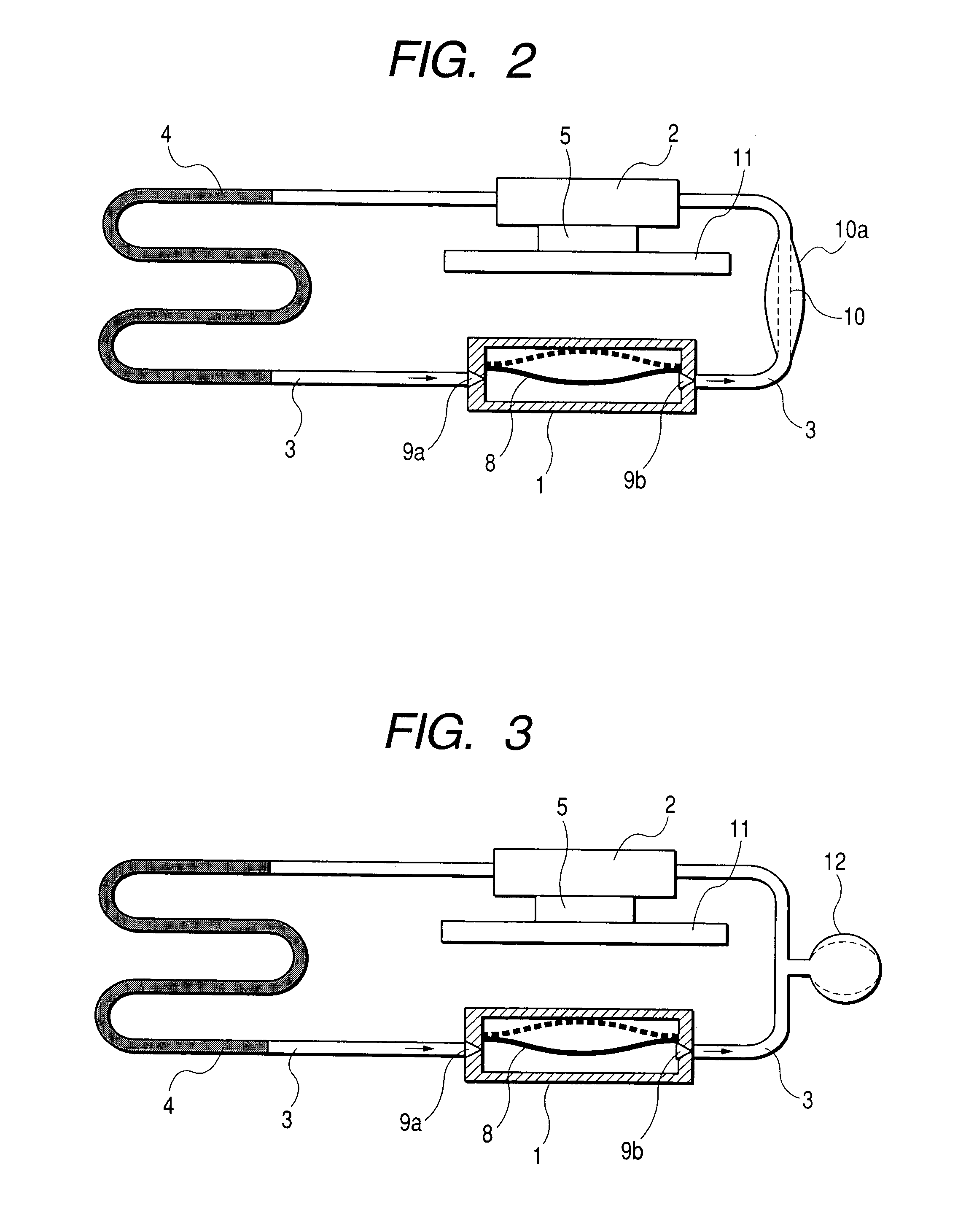Liquid cooling system and personal computer using thereof
- Summary
- Abstract
- Description
- Claims
- Application Information
AI Technical Summary
Benefits of technology
Problems solved by technology
Method used
Image
Examples
first embodiment
[0047]FIG. 2 diagrammatically shows the cooling system of the notebook-type personal computer shown in FIG. 1. The pump 1, the heat receiving jacket, which is in thermal contact with the semiconductor element 5 mounted on a print circuit board 11, and the heat radiation pipe 4 are connected by means of the connector pipes 3. The pump 1 is constructed with a housing having a diaphragm 8 that is mounted for reciprocal movement therein and check valves 9a and 9b. A portion of one of the connector pipes 3 is made of a soft material, so as to form an expansible portion 10. When the diaphragm 8 moves to the solid line position shown in the figure, the cooling liquid is suppressed, and the check valve 9b is opened. Then, due to the pressure of the cooling liquid, the expansible portion 10 is expanded to the shape 10a, therefore the cooling liquid moves out of the pumps in the direction of the arrow. Next, when the diaphragm comes back to the position shown by the broken line, since the pre...
fifth embodiment
[0063]However, if rubber or resin is used, the molecules of the cooling liquid tend to diffuse therein, as was explained in connection with the fifth embodiment, therefore, the cooling liquid may diffuse away into the atmosphere. According to the present embodiment, since the surface of the connector pipe 3 is covered with the metal film 18, it is possible to prevent loss of the cooling liquid from the system. Also, as shown in FIG. 11, the same effect can be obtained by covering the connector pipe with a resin sheet 19, including a metal film 19a and a resin film 19b. In this case, it does not matter if there a space is formed between the resin sheet 19 and the connector pipe 3, however, they must closely adhere to each other at both ends thereof.
seventh embodiment
[0064]FIG. 12 diagrammatically shows the liquid cooling system according to the present invention. In the present embodiment, two pumps are provided in series, thereby forming a flow passage as a closed loop. Solid lines and broken lines of the diaphragms 8 and 8′ correspond to each other. When the diaphragm 9 of the pump 1 is at the position shown by the solid line, so as to pressurize the cooling liquid, the diaphragm 8′ of the pump 1′ is at the position shown in the solid line, therefore the cooling liquid emitted from the pump 1 flows into the pump 1′. In this manner, since the two pumps are shifted in operation by 180 degree as to the phase of reciprocal movements of the diaphragms thereof, the cooling liquid can flow in the direction of arrows, therefore obtaining effects that are totally the same as those of the other embodiments, i.e., it is possible to draw out the characteristics or performance of the liquid cooling system with high efficiency, thereby to provide a system ...
PUM
 Login to View More
Login to View More Abstract
Description
Claims
Application Information
 Login to View More
Login to View More - R&D
- Intellectual Property
- Life Sciences
- Materials
- Tech Scout
- Unparalleled Data Quality
- Higher Quality Content
- 60% Fewer Hallucinations
Browse by: Latest US Patents, China's latest patents, Technical Efficacy Thesaurus, Application Domain, Technology Topic, Popular Technical Reports.
© 2025 PatSnap. All rights reserved.Legal|Privacy policy|Modern Slavery Act Transparency Statement|Sitemap|About US| Contact US: help@patsnap.com



